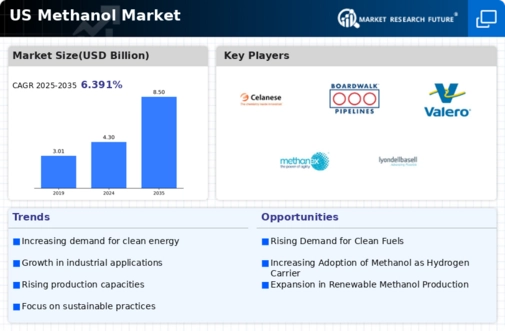US Methanol Market Summary
The US Methanol market is projected to grow from 4.3 USD billion in 2024 to 8.5 USD billion by 2035, reflecting a robust growth trajectory.
Key Market Trends & Highlights
US Methanol Key Trends and Highlights
- The US Methanol market is valued at 4.3 USD billion in 2024 and is expected to reach 8.5 USD billion by 2035.
- The compound annual growth rate (CAGR) for the US Methanol market is estimated at 6.39 percent from 2025 to 2035.
- This growth trajectory indicates a strong demand for methanol in various applications across the United States.
- Growing adoption of methanol as a cleaner fuel alternative due to environmental regulations is a major market driver.
Market Size & Forecast
| 2024 Market Size | 4.3 (USD Billion) |
| 2035 Market Size | 8.5 (USD Billion) |
| CAGR (2025-2035) | 6.39% |
Major Players
Celanese, U.S. Methanol, Mitsubishi Gas Chemical Company, Boardwalk Pipeline Partners, Methanol Holdings (Trinidad) Limited, Global Chemical Solutions, Valero Energy, Oxy Low Carbon Ventures, Methanex, Eastman Chemical Company, LyondellBasell, MMR Holdings, Southern Chemical Corporation















